Unearthing Australia's giants

Hidden in rocks and dirt just three hours north-west of Brisbane, the fossilised remains of prehistoric megafauna that roamed the Australian continent millions of years ago lie waiting to be unearthed.
In the rural town of Chinchilla, the megafauna – literally ‘large animals’ – has been preserved by the sand; the once-formidable creatures left only fossils behind.
The remains of ancient animals, including the giant kangaroo, the diprotodon – thought to be the world's largest marsupial – and the Euryzygoma, the diprotodon's ancestor, have been discovered in the region.
A three-dimensional model of the diprotodon dig site at Chinchilla. Credit: Dr Gilbert Price / UQ School of Earth and Environmental Sciences
The fossils of some of these animals have been preserved in Chinchilla’s underground since the Pliocene era, 3.5 million years ago.
Visitors to the region today can witness the results of a scientific legacy that dates back to the 19th century.
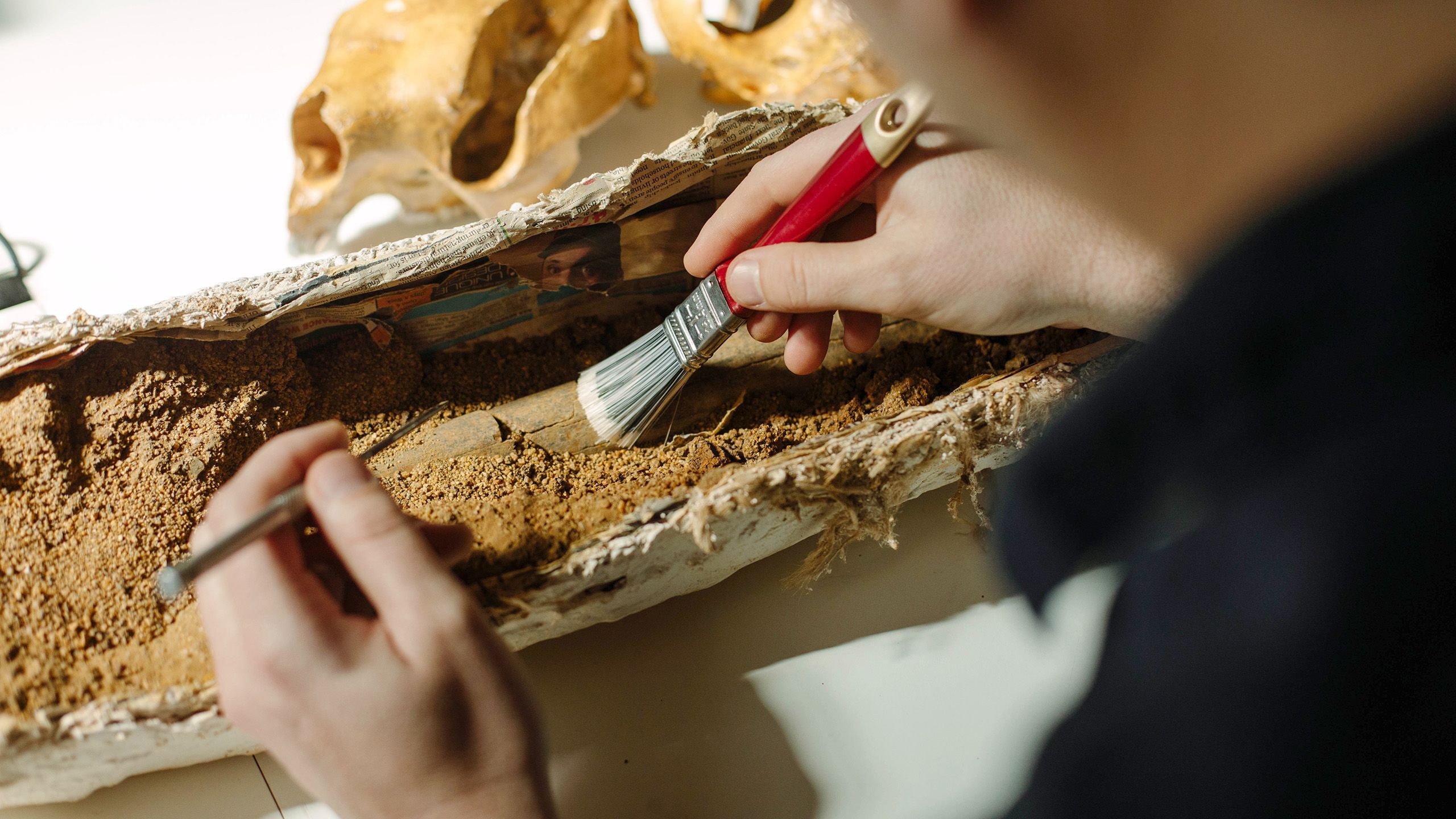
The Chinchilla legacy
The megafauna dig site at by the Condamine River in Chinchilla has been visited by scientists from around the world since the 1840s, beginning with world-renowned German researcher Ludwig Leichhardt.
Dr Gilbert Price, Senior Lecturer in Palaeontology, is part of a long line of UQ researchers who have hunted for fossils at the site.
UQ's legacy at Chinchilla began with Alan Bartholomai, who completed a master’s degree under the tutelage of renowned geologist and palaeontologist Dorothy Hill AC, CBE, FAA, FRS in the 1950s.
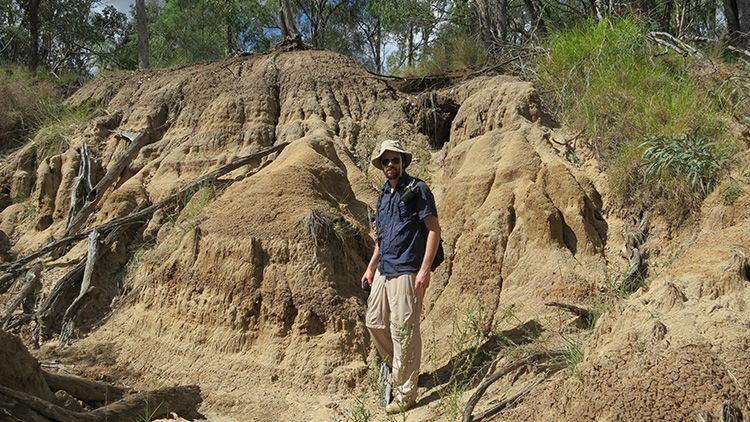
Dr Gilbert Price at the Chinchilla fossil site. Image: supplied
“I often think of her [Professor Hill] as my academic great grandma because she was my supervisor's supervisor’s supervisor. So, there’s a bit of an academic lineage out there,” Dr Price said.
UQ students are continuing the legacy of these pioneering scholars.
“We take volunteer students out – sometimes they'll be undergrads or Honours students, and we’ve had a couple of PhD students,” Dr Price said.
“It’s a beautiful place to learn science and do research, but also train the next generation of younger scientists coming through.”
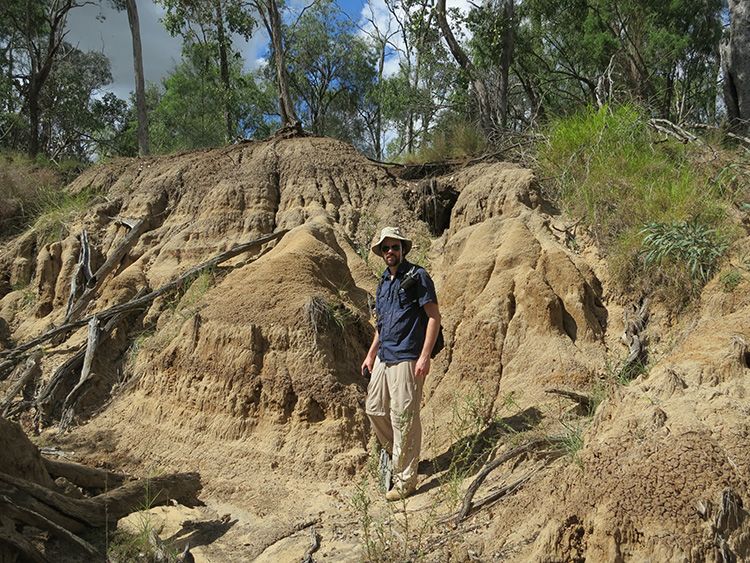
Dr Gilbert Price at the Chinchilla fossil site. Image: supplied
Dr Gilbert Price at the Chinchilla fossil site. Image: supplied
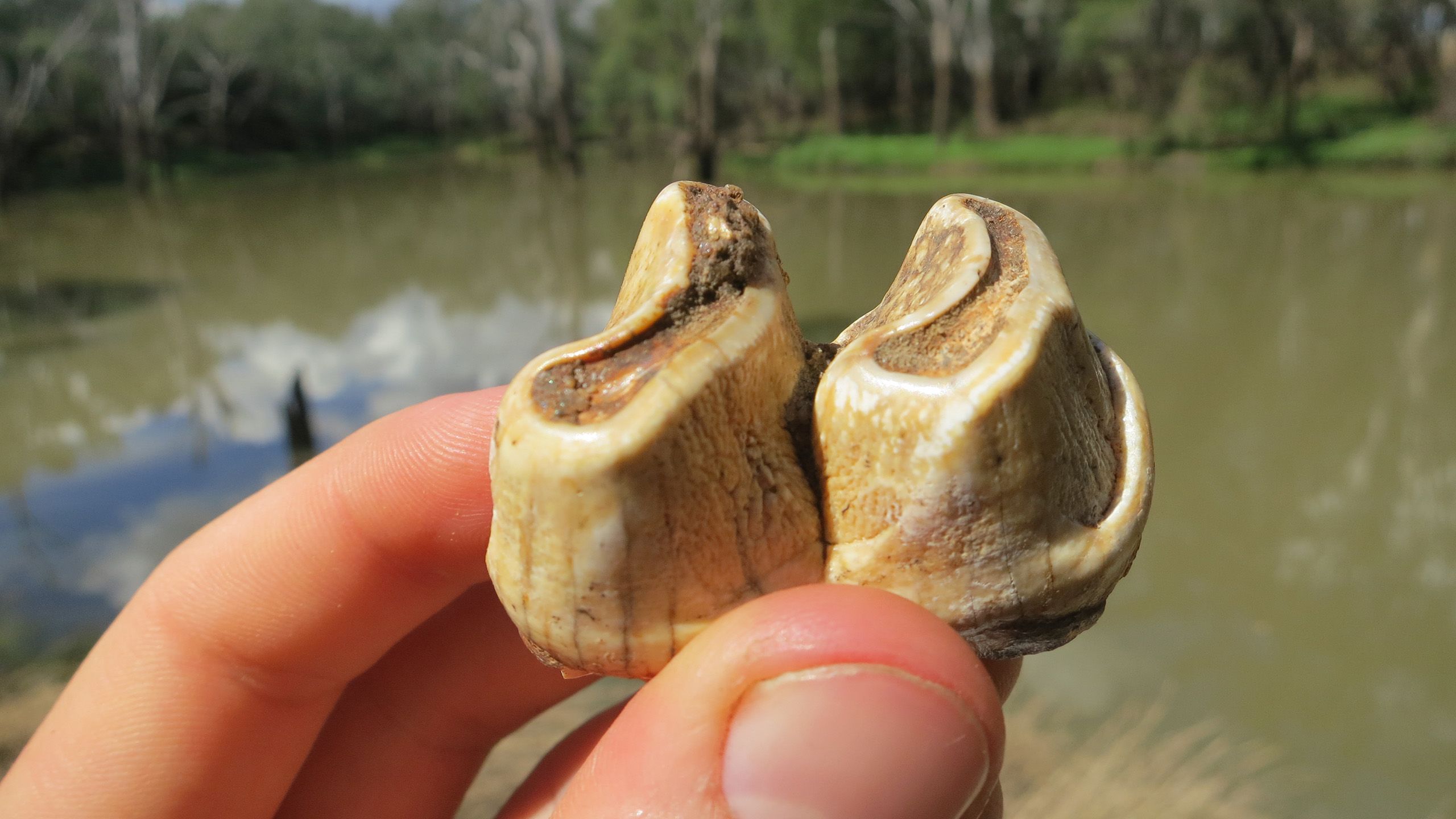


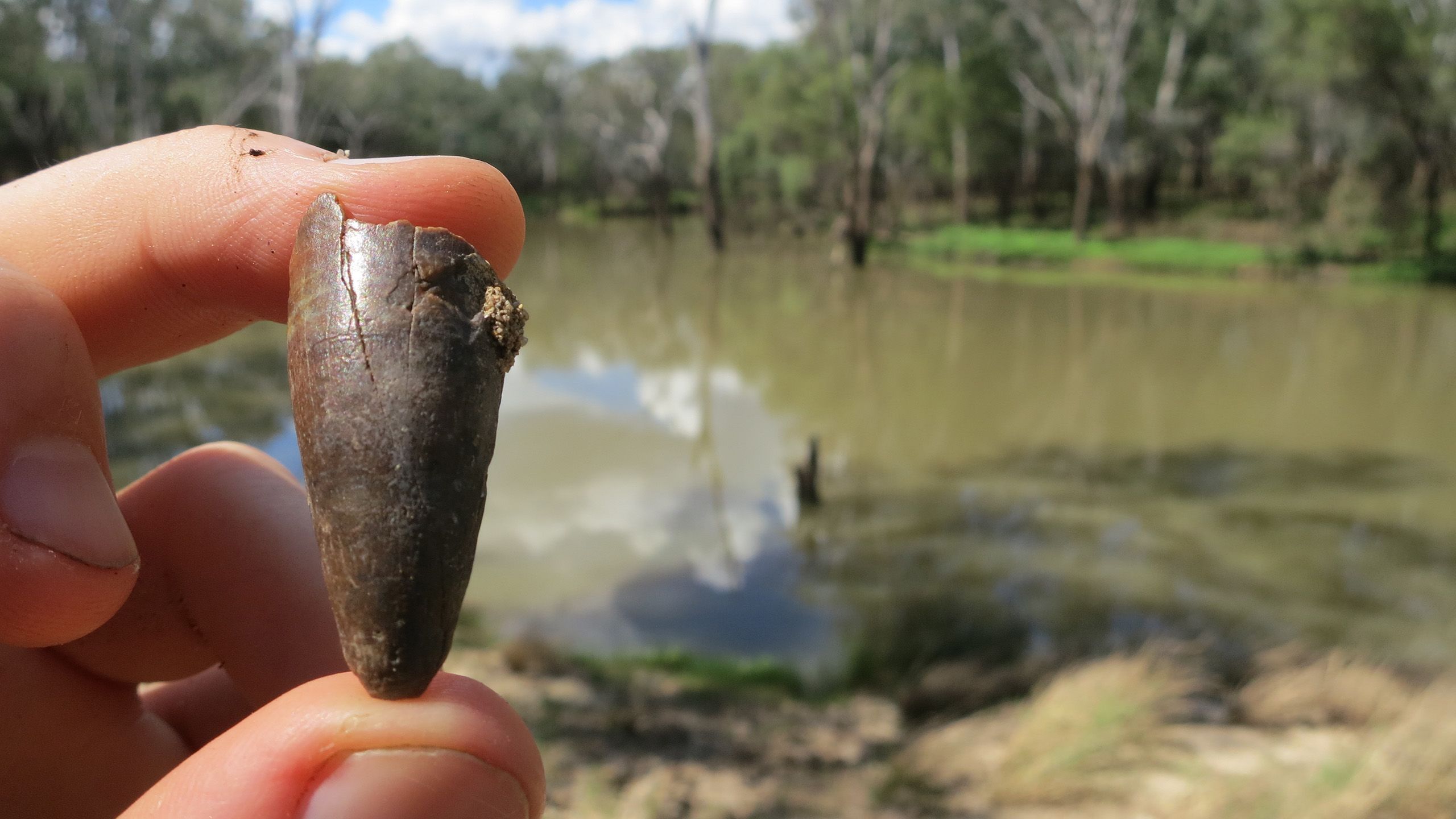

The molar of a Euryzygoma, the extinct ancestor of the diprotodon, found at the Chinchilla fossil site by the Condamine River.
The molar of a Euryzygoma, the extinct ancestor of the diprotodon, found at the Chinchilla fossil site by the Condamine River.

A team of palaeontologists working at the Chinchilla fossil site.
A team of palaeontologists working at the Chinchilla fossil site.

A Euryzygoma premaxilla (snout), including three incisor teeth, buried in the sand at the Chinchilla fossil site.
A Euryzygoma premaxilla (snout), including three incisor teeth, buried in the sand at the Chinchilla fossil site.

A fossilised crocodile tooth found at the Chinchilla dig site by the Condamine River.
A fossilised crocodile tooth found at the Chinchilla dig site by the Condamine River.
Recent Bachelor of Science (Hons) (Zoology) / Bachelor of Arts (Archaeology) graduate Eleanor (Nellie) Pease – “Dorothy Hill’s great-great grandstudent” – completed her Honours thesis under the supervision of Dr Price using fossils discovered in Chinchilla.
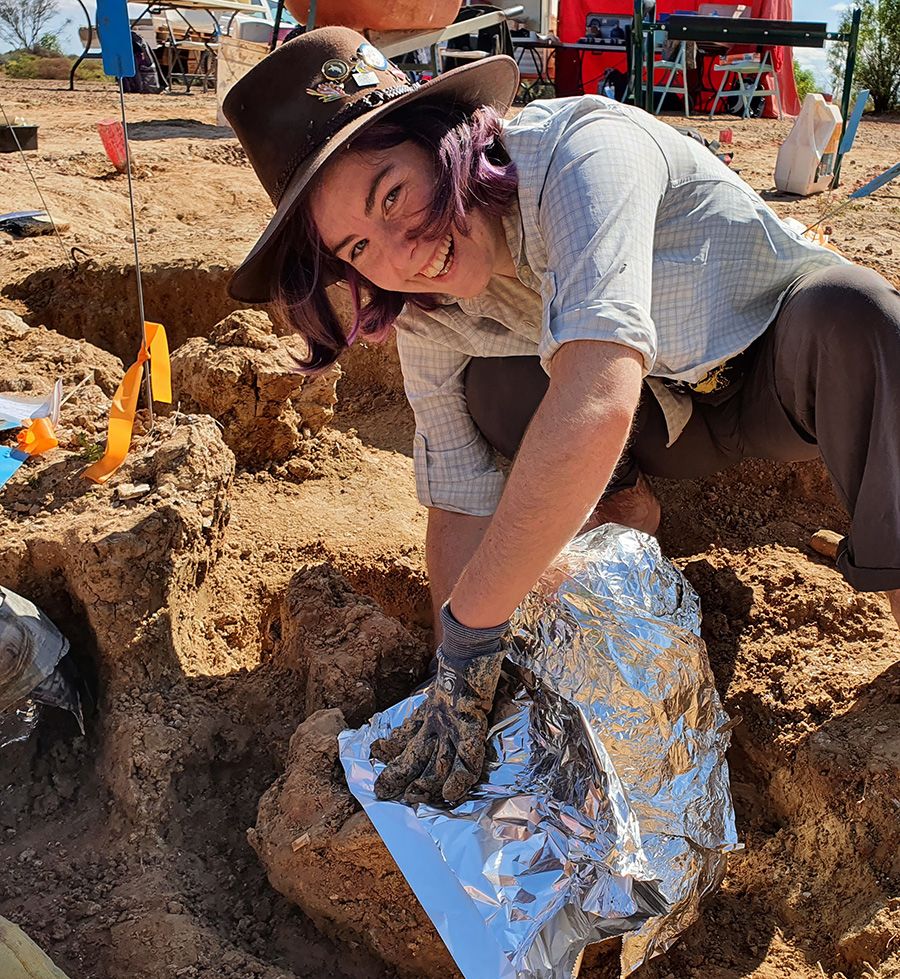
Nellie Pease at a fossil site in Western Queensland. Image: supplied
Nellie Pease at a fossil site in Western Queensland. Image: supplied
“I looked at a really bizarre animal called Palorchestes, which was a giant extinct plant-eating relative of today's wombats,” Nellie explained.
“It would've been a really weird-looking animal, like nothing we know of today – it had huge muscular forearms, giant sharp claws and a strange fleshy nose that might've looked something like a tapir's trunk.”
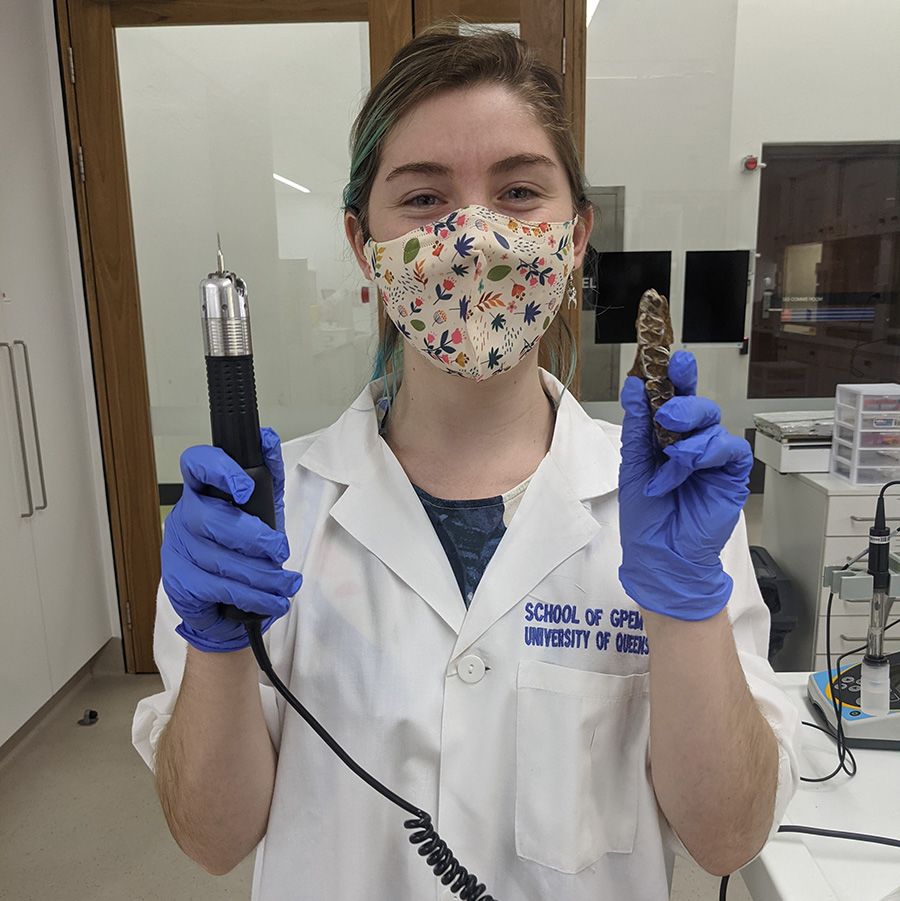
Nellie preparing to drill Palorchestes teeth for her Honours research. Image: supplied
Nellie preparing to drill Palorchestes teeth for her Honours research. Image: supplied
Nellie is currently preparing her Honours research for publication and will soon be moving to work as an archaeologist in the Pilbara region of Western Australia.
As well as a scientist, Nellie is a freelance scientific illustrator. She recently collaborated with UQ researchers Dr Vera Weisbecker (now at Flinders University) and Dr Ariel Marcy to illustrate prehistoric animals for a board game called Go Extinct! Megafauna.
A chance encounter
Dr Price’s road to studying prehistoric creatures was an unconventional one.
“Most people I know who work in palaeontology came into it through a passion for dinosaurs as a child,” he said.
Despite growing up in an area rich in fossils, it wasn’t until one chance moment on a three-day field trip to Dalby during his undergraduate degree in science that Dr Price realised his passion.
“All these students were finding diprotodon skulls and other bits and pieces. I didn't find anything at all. And I hated every moment of it,” he said.
“It got to about 4.30pm on the last day – we were about to pack up and go – and I was frustrated. I had a screwdriver and I thrust it into the side of a creek bank and popped out a lump of black soil. And on the other side of it there was a tooth from a giant kangaroo.
“I didn't know it was a kangaroo tooth at the time, and it was broken, so I showed it to the lecturer, Dr Bernie Cooke. And Bernie said, ‘Oh, it’s from a massive extinct kangaroo’.
“And it was literally that single moment right there that changed the rest of my life.”
Dr Price went on to complete a PhD about diprotodons, winning several awards – including a prestigious Tall Poppy Award – along the way.
Fossils of diprotodons and their ancestors, Euryzygoma, have been found in Chinchilla – some by Dr Price and his UQ colleagues.
Dr Price compared the process of identifying and dating fossils to solving a jigsaw puzzle.
“With jigsaw puzzles, you've got a picture on the front of the box, and you've got all the pieces that are broken up inside the box.
“With palaeontology, you've got the pieces that are broken up, but you don't have the picture on the box.
“Through that really careful and detailed examination of all the different pieces, you reconstruct the picture.”
UQ's Senior Lecturer in Palaeontology Dr Gilbert Price.
Image: Anjanette Hudson
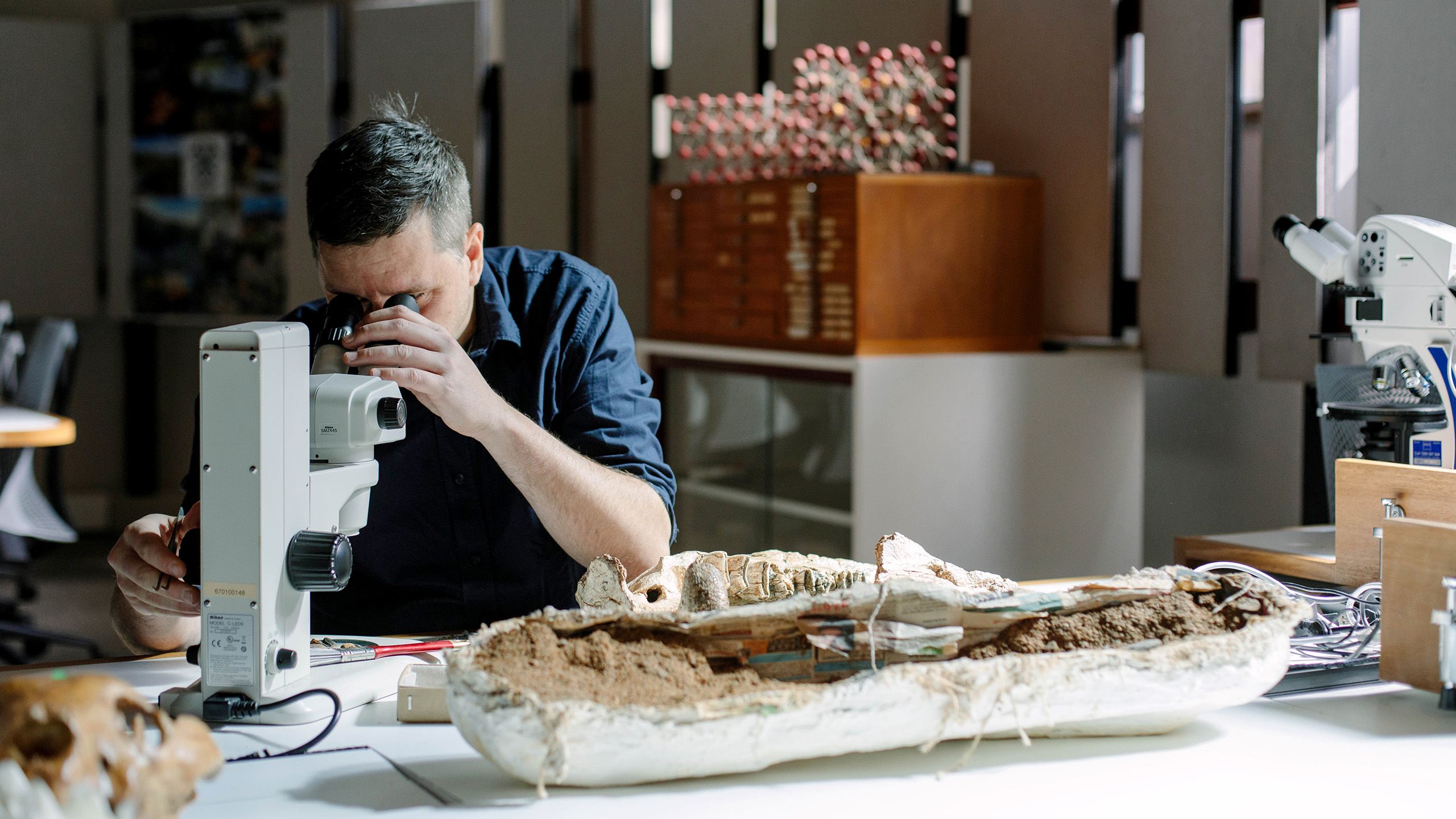
A rich history preserved
The Chinchilla deposit has preserved species that lived during a very important time for Australia – a time that saw the first evidence of modern animals like koalas, wombats and bandicoots.
Some of the oldest records of native Australian rodents, such as rats and mice, are also found in Chinchilla.

A fossilised kangaroo skull. Image: Anjanette Hudson
Interestingly, the dig site is also the source of the oldest record of the Komodo dragon, the largest lizard in the world, which is typically considered a species native to Indonesia.
As well as megafauna, Chinchilla is home to fossilised wood that dates back to the Jurassic period, around 170 million years ago.
Dr Price thinks the significance of this site should be celebrated.
“Many locals don’t know about the significance of the fossil sites out there,” Dr Price said.
“I'd love to see regional museums and regional government really celebrating the resources that they have around them.
“Scientific reserves or resources like fossils – particularly geologically young ones that have direct relevance to understanding things like climate change and extinction – is something that would be really cool to recognise out there.”
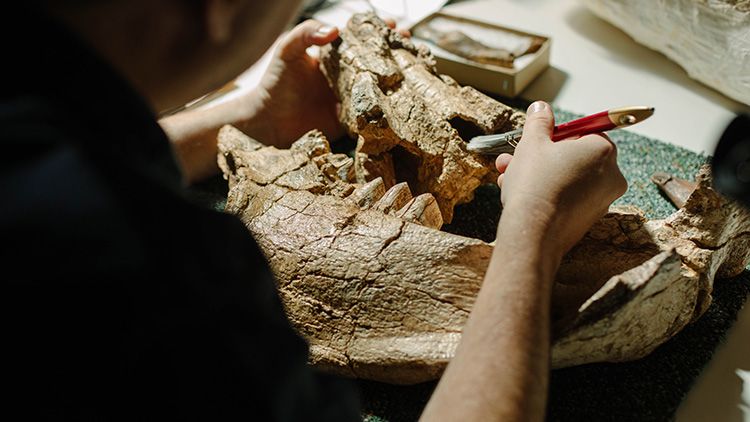
Dr Gilbert Price examining two pieces of a broken fossilised diprotodon jaw. Image: Anjanette Hudson
The University of Queensland visited Roma and Chinchilla, including the Chinchilla fossil site, as part of the Regional Roadshow on 26 and 27 August. Roma and Chinchilla were the latest stops for UQ in a journey around regional and remote Queensland.
Toowoomba, Dalby, Warwick, Gatton and Moreton Bay have also been visited this year, with trips to Townsville, the Sunshine Coast, Kingaroy, Gympie, Wide Bay and the Gold Coast still to come.
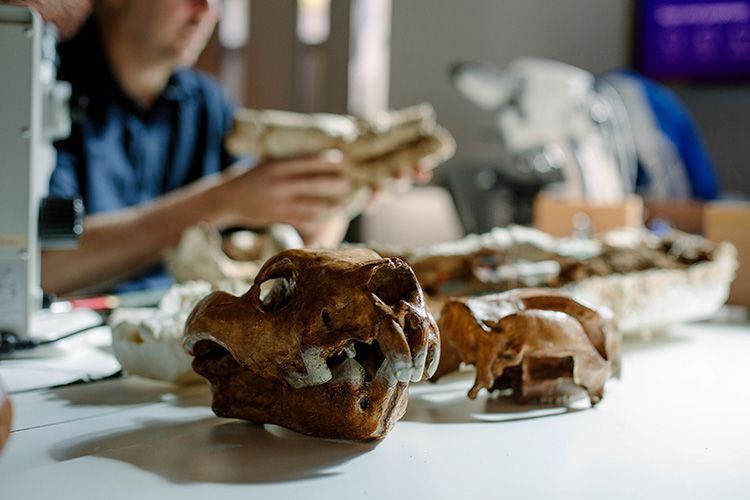
A fossilised kangaroo skull. Image: Anjanette Hudson
A fossilised kangaroo skull. Image: Anjanette Hudson
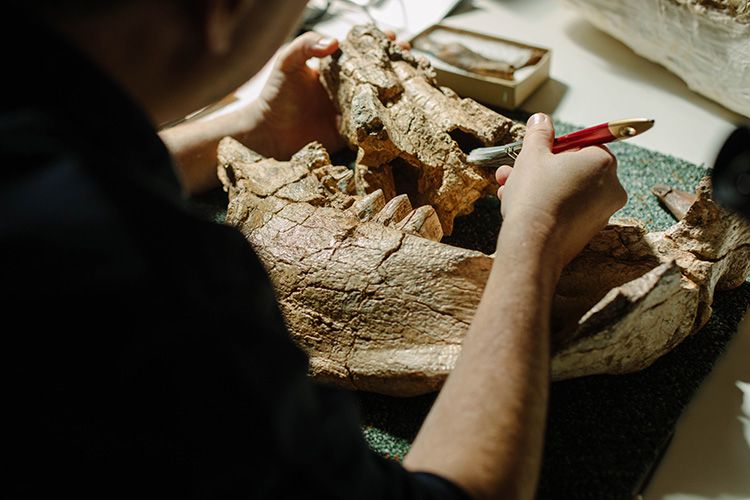
Dr Gilbert Price examining two pieces of a broken fossilised diprotodon jaw. Image: Anjanette Hudson
Dr Gilbert Price examining two pieces of a broken fossilised diprotodon jaw. Image: Anjanette Hudson


